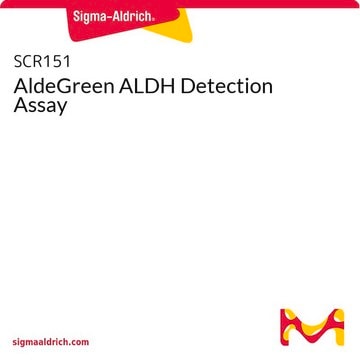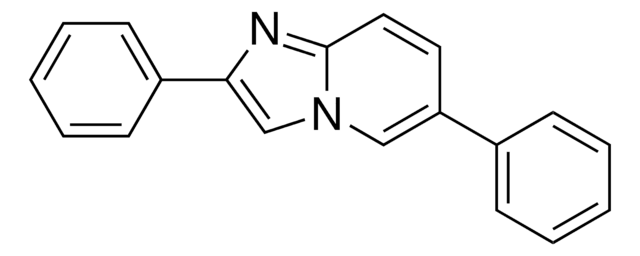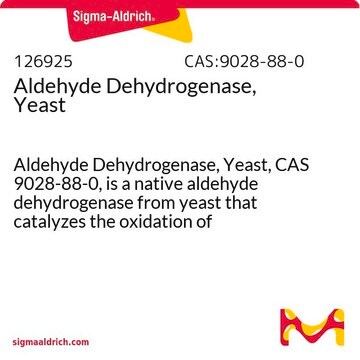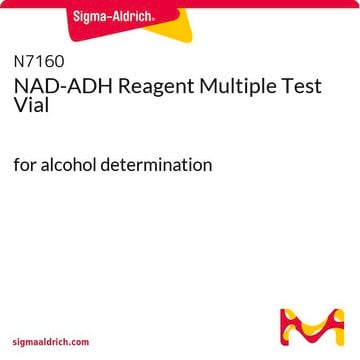It is recommended to use a dounce homogenizer on ice or perform mild sonication on ice to lyse the cells. The assay buffer contains detergent but will not lyse the cells by simply incubating in it.
MAK082
Aldehyde Dehydrogenase Activity Colorimetric Assay Kit
sufficient for 100 colorimetric tests
Sinónimos:
ALDH Activity Assay Kit
About This Item
Productos recomendados
uso
sufficient for 100 colorimetric tests
método de detección
colorimetric
enfermedades relevantes
cardiovascular diseases; cancer; hematological disorder
temp. de almacenamiento
−20°C
Descripción general
Aplicación
Características y beneficios
Idoneidad
Principio
Palabra de señalización
Danger
Frases de peligro
Consejos de prudencia
Clasificaciones de peligro
Carc. 1B - Eye Dam. 1 - Skin Corr. 1B
Código de clase de almacenamiento
6.1C - Combustible acute toxic Cat.3 / toxic compounds or compounds which causing chronic effects
Elija entre una de las versiones más recientes:
Certificados de análisis (COA)
¿No ve la versión correcta?
Si necesita una versión concreta, puede buscar un certificado específico por el número de lote.
¿Ya tiene este producto?
Encuentre la documentación para los productos que ha comprado recientemente en la Biblioteca de documentos.
Los clientes también vieron
Artículos
AldeRed™ 588-A detects ALDH activity in cancer stem cells, aiding in cancer research.
-
Is it possible for the assay buffer to lyse the cells without the use of additional instrumentation such as a sonicator?
1 respuesta-
¿Le ha resultado útil?
-
-
Is there a general range expected for the activity of the ALDH positive control? Given variances in room temperature, etc.
1 respuesta-
The positive control does not have an expected activity range.
¿Le ha resultado útil?
-
-
What is the kit Sensitivity? thanks,
1 respuesta-
This assay kit can detect < 0.5 mU/well of ALDH activity (based on the unit definition) in a variety of samples. Unit Definition: One unit is the amount of enzyme that will generate 1.0 umol of NADH per min at pH 8 at room temperature. This is a sensitive assay for measuring ALDH activity in various biological samples and the kit is also suitable for high throughput analyses.
¿Le ha resultado útil?
-
Filtros activos
Nuestro equipo de científicos tiene experiencia en todas las áreas de investigación: Ciencias de la vida, Ciencia de los materiales, Síntesis química, Cromatografía, Analítica y muchas otras.
Póngase en contacto con el Servicio técnico










